Name Unknown (see nickname) Nickname(s) Pinta Tons burthen 60–70 tons Length 23 m | Launched 1441(?) Type Caravel Beam 5.36 m (17.6 ft) Draft 2.31 m | |
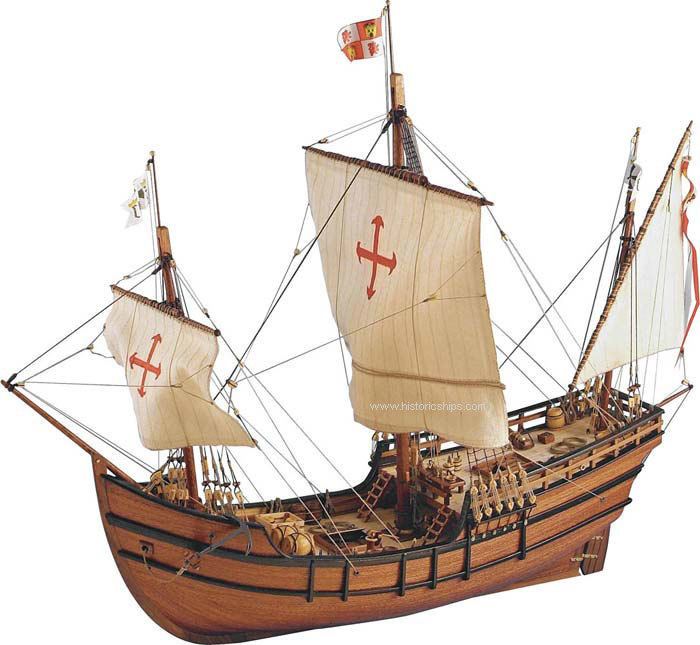 | ||
La Pinta (Spanish for The Pint (liquid measure), The Look, or The Spotted One ) was the fastest of the three ships used by Christopher Columbus in his first transatlantic voyage in 1492. The New World was first sighted by Rodrigo de Triana aboard Pinta on 12 October 1492. The owner of Pinta was Cristobal Quintero. The Quintero brothers were ship owners from Palos. The owner of the ship allowed Martin Alonso Pinzon to take over the ship so he could keep an eye on the ship.
Contents
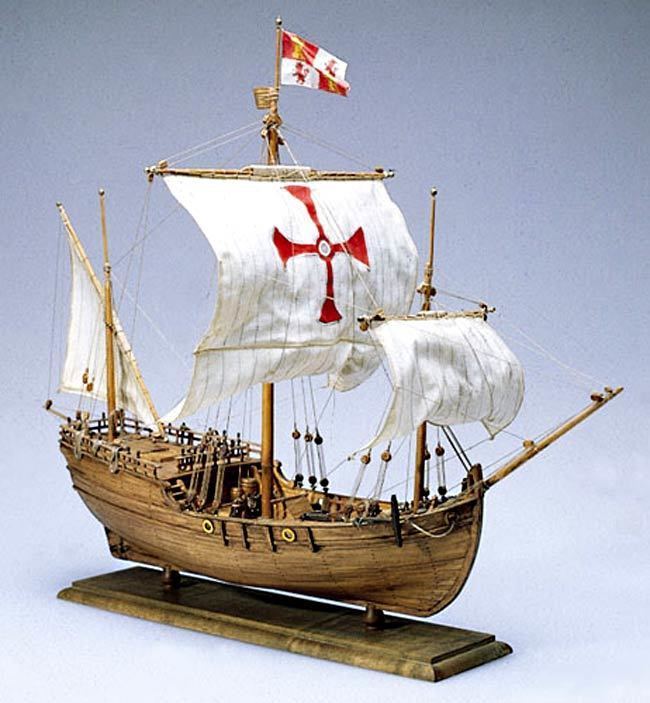
Pinta was a caravel-type vessel. By tradition Spanish ships were named after saints and usually given nicknames. Thus, Pinta, like Niña, was not the ship's actual name. The actual name of Pinta is unknown. The origin of the ship is disputed but is believed to have been built in Spain in the year 1441. It was later rebuilt for use by Christopher Columbus.
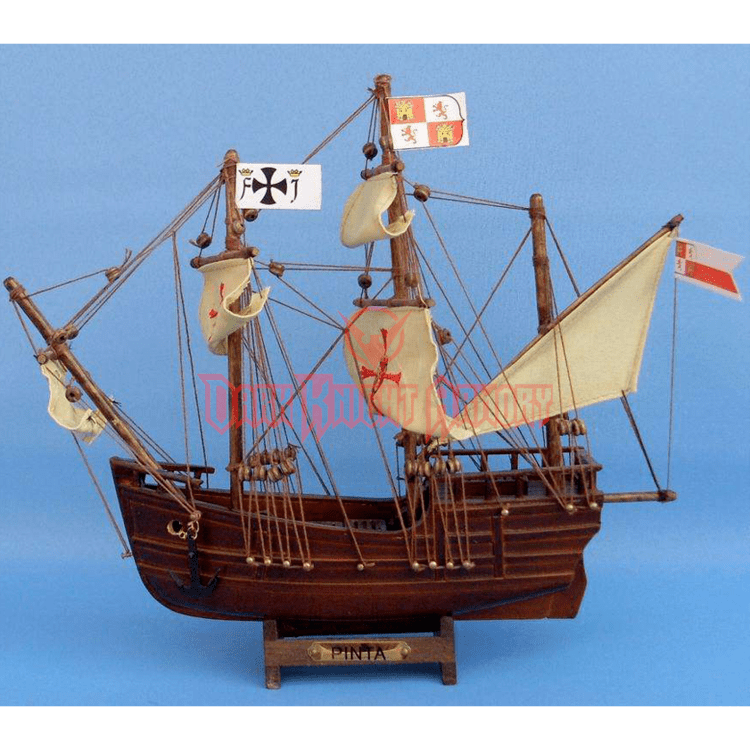
Detail

Pinta was square rigged and smaller than Santa María. The ship weighed approximately 60 tons with an estimated deck length of 17 meters (56 ft) and a width of 5.36 meters (17.6 ft). The crew size was 26 men under Captain Martín Alonso Pinzón.
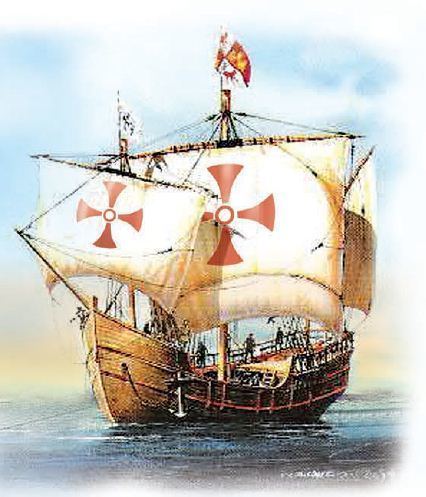
The other ships of the Columbus expedition were Niña (real name Santa Clara) and Santa María. There are no known contemporary likenesses of Columbus's ships.
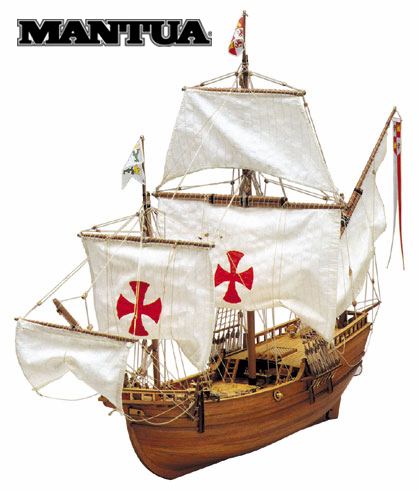
Santa María (also known as Gallega) was the largest, of a type known as a carrack (carraca in Spanish), or by the Portuguese term nau. Niña and Pinta were smaller. They were called caravels, a name then given to the smallest three-masted vessels. Columbus once used it for a vessel of forty tons, but it generally applied in Portuguese or Spanish use to a vessel ranging one hundred and twenty to one hundred and forty Spanish "toneles". This word represents a capacity about one-tenth larger than that expressed by the modern English "ton".
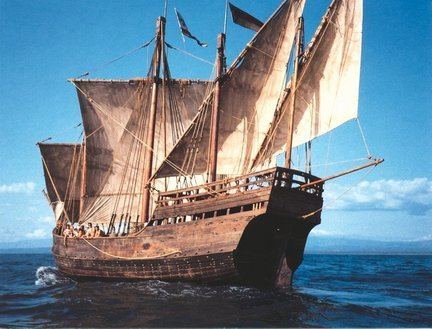
Niña, Pinta, and Santa María were not the largest ships in Europe at the time. They were small trade ships surpassed in size by ships like Great Michael, built in Scotland in 1511 with a length of 73.2 m (240 ft), and a crew of 300 sailors, 120 gunners, and up to 1,000 soldiers. Peter von Danzig of the Hanseatic League was built in 1462 and was 51 m (167 ft) long. Another large ship, the English carrack Grace Dieu, was built during the period 1420–1439, was 66.4 m (218 ft) long, and weighed between 1,400 tons and 2,750 tons. Ships built in Europe in the fifteenth century were designed to sail the Mediterranean sea and the Atlantic ocean coastlines. Columbus' smaller-sized ships were considered riskier on the open ocean than larger ships. This made it difficult to recruit crew members, and a small number were jailed prisoners given a lighter sentence if they would sail with Columbus.
Most of the commerce of the time was the coastal commerce of the Mediterranean, so it was better if ships did not draw much water. The fleet of Columbus, as it sailed, consisted of Gallega (the Galician), which he changed the name to Santa María, and of Pinta and Niña. Of these the first two were of a tonnage that should be rated as about one hundred and thirty tons. Niña was much smaller, not more than fifty tons. One writer says that they were all without full decks, that is, that such decks as they had did not extend from stem to stern. Other authorities, however, speak as if Niña was only an open vessel, and the two larger were decked. Columbus himself took command of Santa María, Martin Alonso Pinzon of Pinta, and his brothers, Francis Martin and Vicente Yanez, of Niña. The whole company in all three ships likely numbered 90 men (Santa Maria-40, Nina-24, Pinta-26) although some historians cite 120 men.
Replicas
A replica of Pinta was built by the Spanish government for the Columbian Naval Review of 1893. Along with replicas of Santa María and Niña, it participated in the review.
Replicas are on display at
In 2005, a replica of Pinta was built by the Columbus Foundation, as well as one of Niña. This ship weighs 101 tons and often sails alongside Niña.
